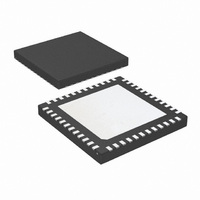LMH0041SQ/NOPB National Semiconductor, LMH0041SQ/NOPB Datasheet - Page 15

LMH0041SQ/NOPB
Manufacturer Part Number
LMH0041SQ/NOPB
Description
IC DESERIALIZER SDI LVDS 48-LLP
Manufacturer
National Semiconductor
Series
LMH®r
Datasheet
1.LMH0051SQENOPB.pdf
(28 pages)
Specifications of LMH0041SQ/NOPB
Function
Deserializer
Data Rate
3Gbps
Input Type
Serial
Output Type
LVDS
Voltage - Supply
2.5V, 3.3V
Operating Temperature
-40°C ~ 85°C
Mounting Type
Surface Mount
Package / Case
48-LLP
Operating Temperature (min)
-40C
Operating Temperature Classification
Industrial
Operating Temperature (max)
85C
Package Type
LLP EP
Rad Hardened
No
Lead Free Status / RoHS Status
Lead free / RoHS Compliant
Number Of Outputs
-
Number Of Inputs
-
Lead Free Status / Rohs Status
Compliant
Other names
LMH0041SQTR
Available stocks
Company
Part Number
Manufacturer
Quantity
Price
GENERAL PURPOSE I/O PINS (GPIO)
The DES has three pins which can be configured to provide
direct access to certain register values via a dedicated pin.
For example if a particular application required fast action to
the condition of the deserializer losing it’s input signal, the
PCLK detect status bit could be routed directly to an external
pin where it might generate an interrupt for the host processor.
GPIO pins can be configured to be in TRI-STATE
Impedance) mode, the buffers can be disabled, and when
used as inputs can be configured with a pullup resistor, a
pulldown resistor or no input pin biasing at all.
Each of the GPIO pins has a register to control it. For each of
these registers, the upper 4 bits are used to define what func-
tion is desired of the GPIO pin with options being slightly
different for each of the three GPIO pins. The pins can be
used to monitor the status of various internal states of the
LMH0040 device, to serve as an input from some external
stimulus, and for output to control some external function.
GPIO
GPIO
GPIO
Bits 2 and 3 are used to determine the status of the internal
pullup/pulldown resistors on the device—they are loaded ac-
cording to the following truth table:
Bit 1 is used to enable or disable the input buffer. If the GPIO
pin is to be used as an output pin, then this bit must be set to
a ‘0’ disabling the output.
The LSB is used to switch the output between normal output
state and high impedance mode. If the GPIO is to be used as
an input pin, this bit must be set to ‘0’ placing the output in
high Z mode.
As an example, if you wanted to use the GPIO
the status of the input signal on input 0, you would load reg-
ister 02h with the value 0010 0001b
Allow for the output of a signal programmed by the SMBus
Allow the monitoring of an external signal via the SMBus
Monitor the status of the signal on input 0
Monitor Power On Reset
Allow for the output of a signal programmed by the SMBus
Allow the monitoring of an external signal via the SMBus
Monitor the status of the signal on input 1
Monitor Lock condition of the input clock recovery PLL
Allow for the output of a signal programmed by the SMBus
Allow the monitoring of an external signal via the SMBus
Provides a constant clock signal
LVDS TX Clock at 1/20 full rate
CDR Clock at 1/20 full rate
00: pullup and pulldown disabled
01: pulldown enabled
10: pullup enabled
11: reserved
0
1
2
Functions
Functions
Functions
0
pin to monitor
®
(High
15
POTENTIAL APPLICATIONS FOR GPIO PINS
In addition to being useful debug tools while bringing a DES
design up, there are other practical uses to which the GPIO
pins can be put:
Automatic Switching To Secondary Input If The Signal On
The Primary Input Is Lost
By setting GPIO
is a signal present on input 0, the GPIO
there is no signal present on the Input0 pin, if this signal is
inverted and then used to drive the RX_MUX_SEL then if the
input on Input0 is lost, the device will automatically switch to
Input1.
Another possible use of the GPIO pins is to provide access to
external signals such as the CD output from an equalizer or
the LOCK output from the DES itself via the SMBus, helping
to minimize the number of connections between the DES and
the FPGA.
FIGURE 13. Simplified LVCMOS Output Circuit
FIGURE 12. Simplified LVCMOS Input Circuit
0
to monitor the status of input0 when there
30017209
0
pin will go low when
30017208
www.national.com












